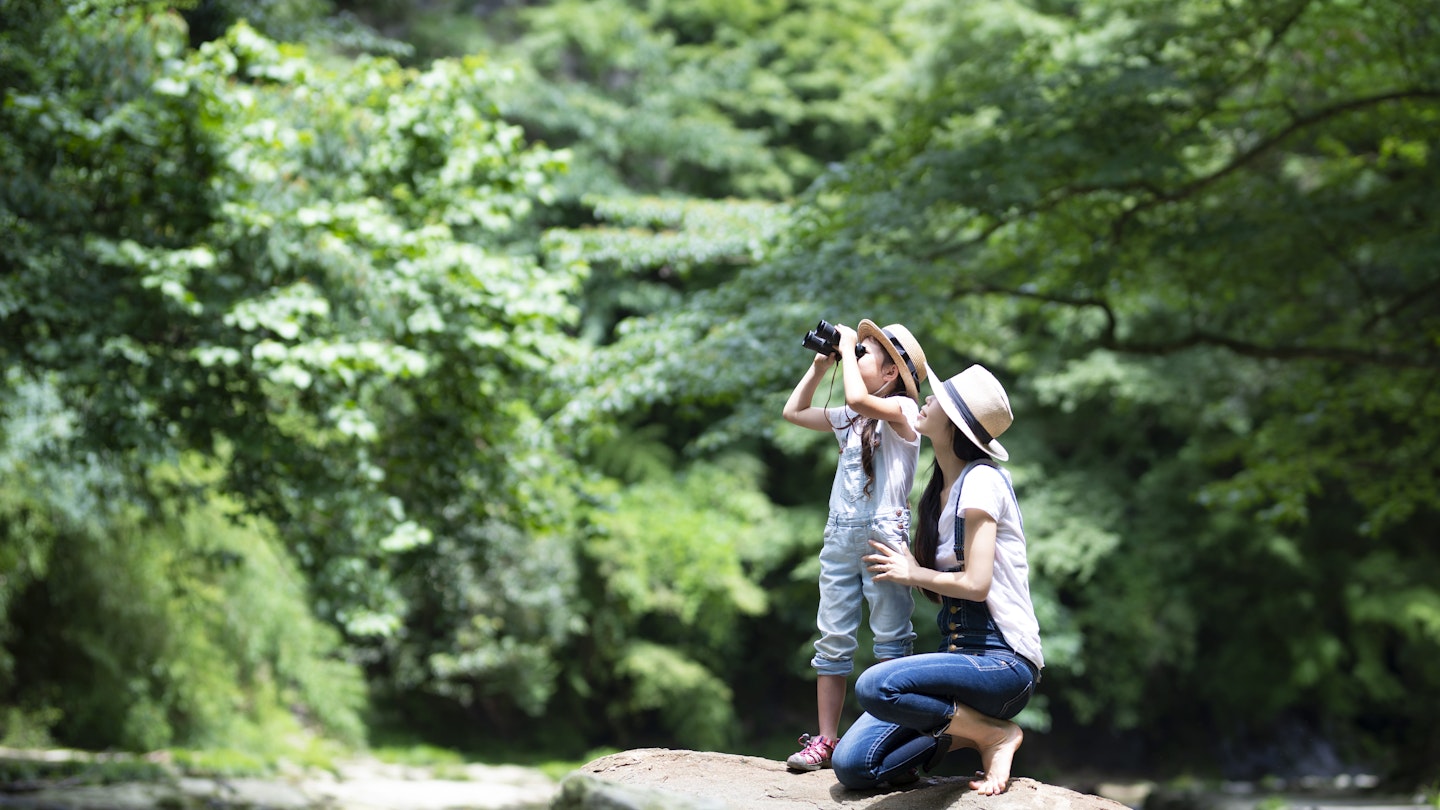Outdoor Adventures for Kids: A Guide by GoTravelDaily
Baby’s first smile, roll, words, and steps are milestones of child development. It’s easy for parents to find expert advice on the best time for swim lessons, to pedal a trike, and ride a bike. However, when is the right time to introduce your children to exciting outdoor adventures?
According to Erin Kirkland, journalist and founder of the Alaska family travel site AKontheGO, parents should start with the basics: “The goal is success for the entire family, and to achieve that, you’ll want to begin with your youngest and/or most inexperienced family member.” This approach allows everyone to have fun and contribute to a family-friendly experience.
While each child develops uniquely, here are suggestions for the appropriate age to engage kids in various outdoor ventures.
Newborns
For parents who have enjoyed outdoor adventures before having kids, introducing your newborn to the great outdoors is a natural extension. It’s important to remember that a newborn is still developing their immune system during the first few months. Therefore, parents should limit exposure to crowded public spaces, but this doesn’t mean your child cannot enjoy the outdoors.
Ensure the baby is dressed appropriately for the weather. When outside, limit sun exposure and use sunscreen once the baby is over six months old. For younger infants, utilize hats, clothing, and shade to shield them from the sun.
Surprisingly, going camping with infants is easier than one might assume. Before they begin crawling, parents need not worry about infants wandering into unsafe areas around the campsite. Consider trying some low-key overnight camping at a local state park, allowing for a quick retreat home if necessary. However, avoid camping during extreme weather conditions, like the dead of winter or the peak of summer.
Infants (6–12 months)
Outdoor activities for infants include hiking, camping, and introducing them to the water through swim lessons. While a 6-month-old can’t walk along the trail, “hikes” using a stroller can provide exercise and relaxation for parents.
As infants grow into the 6-12 month range, camping with a mobile baby can get more challenging. Babies in this age group crawl and explore, eagerly putting anything they touch into their mouths. Vigilance is key to ensuring the safety of your child. Consider setting up mock camping experiences in the basement or backyard if you want to continue the camping tradition.
Six months is also an ideal time to introduce swim lessons, which can ease any water-related fears that develop around eight to nine months, making subsequent lessons easier for both children and parents.
Toddlers (2–3 years old)
At ages two to three, toddlers may lack the stamina for long hikes but thrive in the outdoors. Outdoor experiences could include studying insects, observing flowers, or simply enjoying a stream. Furthermore, many toddlers find excitement in sleeping under the stars.
When planning a toddler’s first camping experience, start with a nearby overnight trip. A sturdy tent will shield everyone from wind and rain, and sticking to the toddler’s routine will help minimize meltdowns. Always remember, for watersports, brief canoe or kayak rides work well—young children should always wear a properly fitted life jacket.
Preschoolers (3–5 years old)
After initial fun experiences, your preschooler may be ready for a longer camping trip. Opt for a state park filled with engaging elements like a lakefront beach or a waterfall. Additionally, ages four to five are excellent for introducing rock climbing, as preschoolers often possess the required problem-solving skills for bouldering routes.
Preschoolers can transition from sitting in the center of a canoe to the bow, where they can actively participate in steering. Even if they don’t provide much force, this involvement nurtures their confidence in the outdoors.
When planning outdoor adventures, it’s beneficial to allow children some unstructured time outdoors. “Kids crave unscheduled, unscripted time in nature,” Erin suggests. Setting up a base camp, encouraging exploration and free play can greatly enhance their outdoor experience.
School-age (6–12 years old)
As kids enter school age, they start expressing personal interests in various outdoor activities. After establishing a solid foundation of outdoor experiences in their early years, it’s now vital to listen to what they want. If your child enjoys hiking, consider planning a backpacking trip; for those who love aquatic activities, aim for paddling adventures.
Involving children in the planning of outdoor experiences can foster a deeper connection to the activities. For example, guided cave tours can cater to adventurous spirits, while interpretive trails can provide a mix of learning and enjoyment through hands-on exploration, such as picking wild raspberries.
Teenagers (13–18 years old)
The teenage years, while often characterized by rebellious behavior, don’t have to sideline outdoor adventures. Activities like geocaching can reignite their enthusiasm for hiking. Teens enjoy the thrill of finding hidden treasures while exploring the outdoors.
During camping trips, providing teens with their own space enhances their comfort. When planning trips, strive to find unique accommodations such as yurts or glamping options that pique their interest.
Outdoor Adventures at Any Age
Preparing children for a lifetime of enjoying the outdoors is akin to preparing them for independence. Parents should maintain realistic expectations and flexibility; outdoor activities with kids can differ significantly from solo experiences.
“Just go,” advises travel writer Chez Chesak. “Don’t overthink it. Any age can be right for outdoor adventures,” with careful considerations in place according to age. Allowing children the freedom to make mistakes fosters comfort in outdoor settings, helping them develop a lifelong love for nature.





